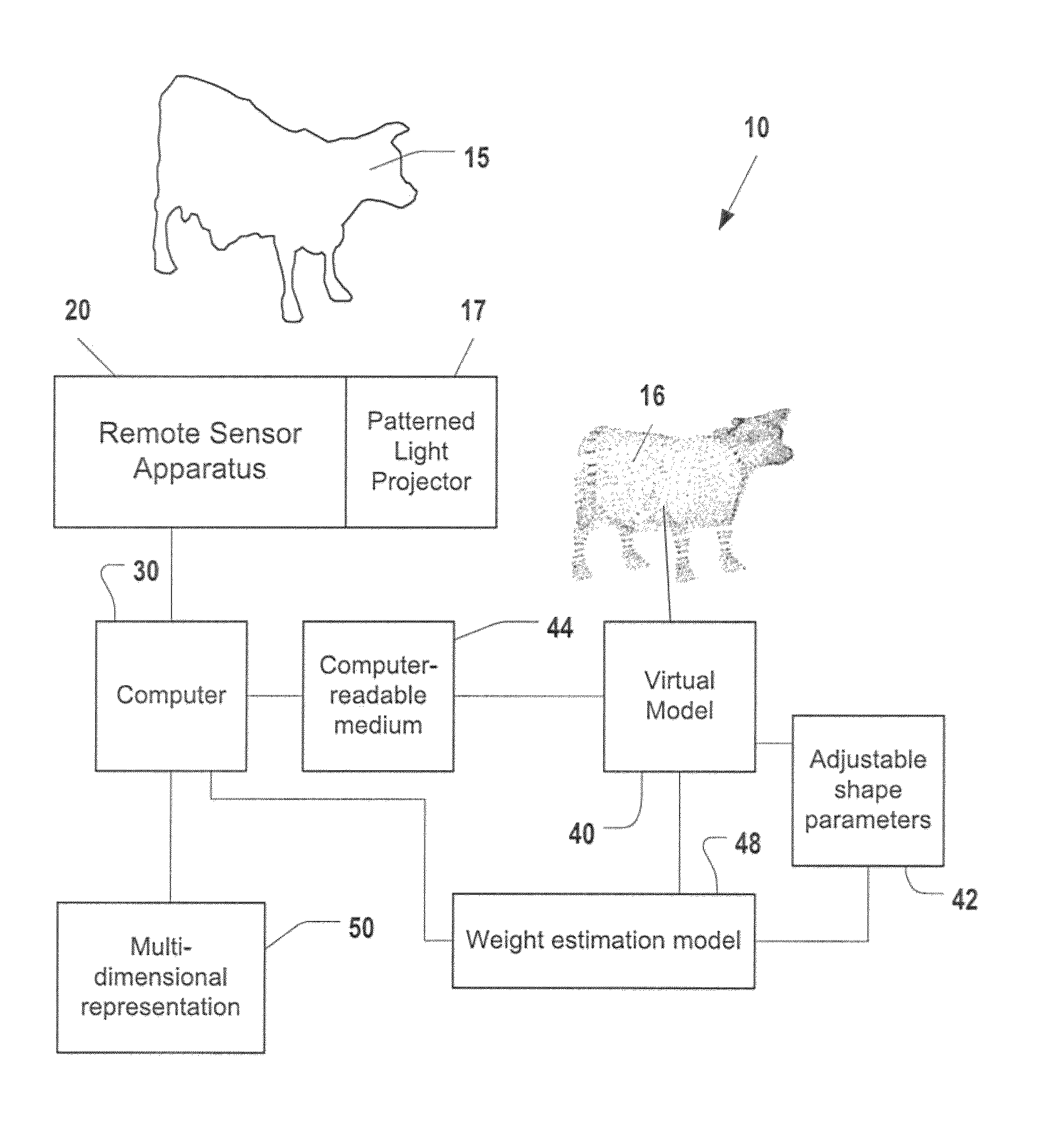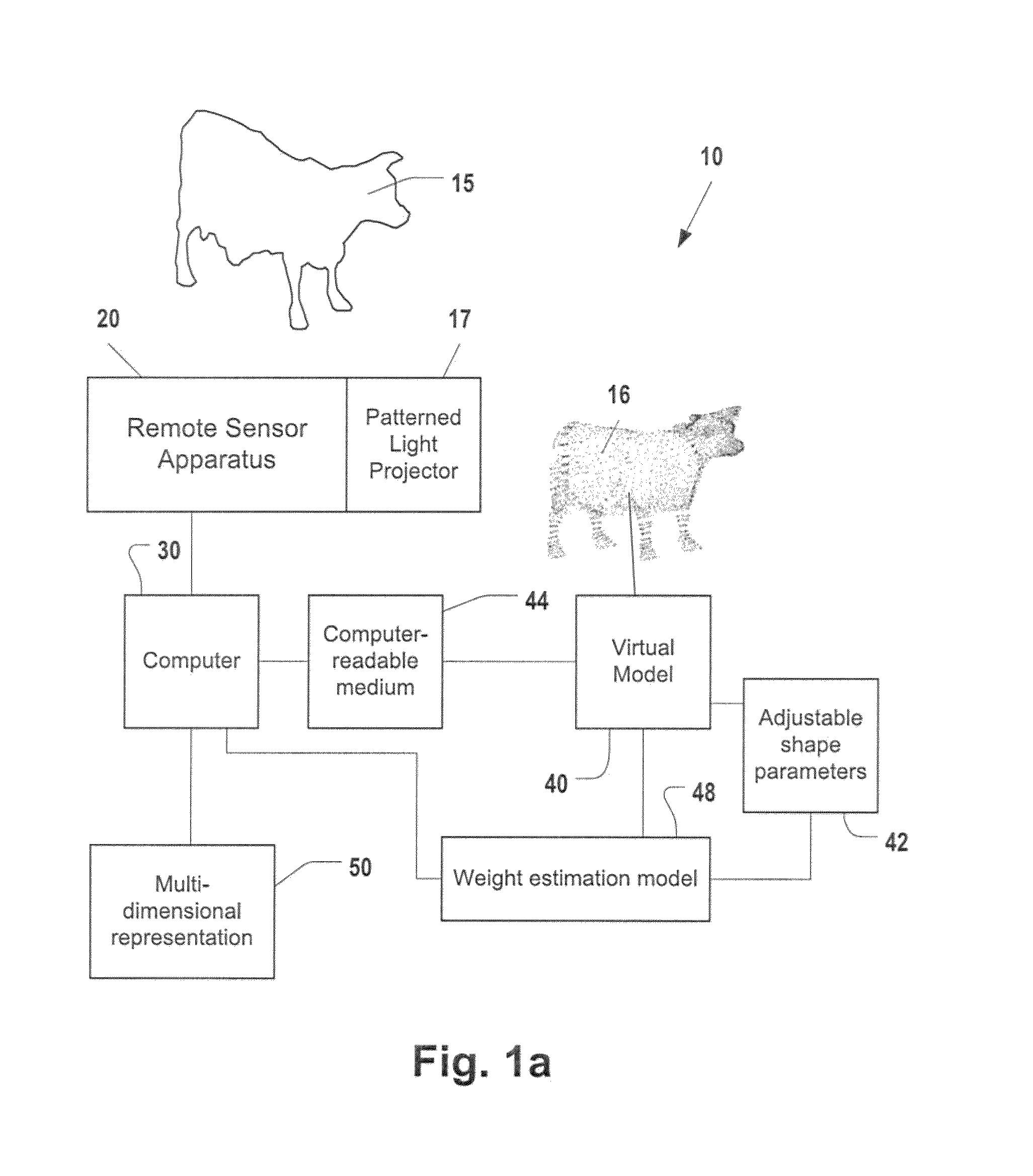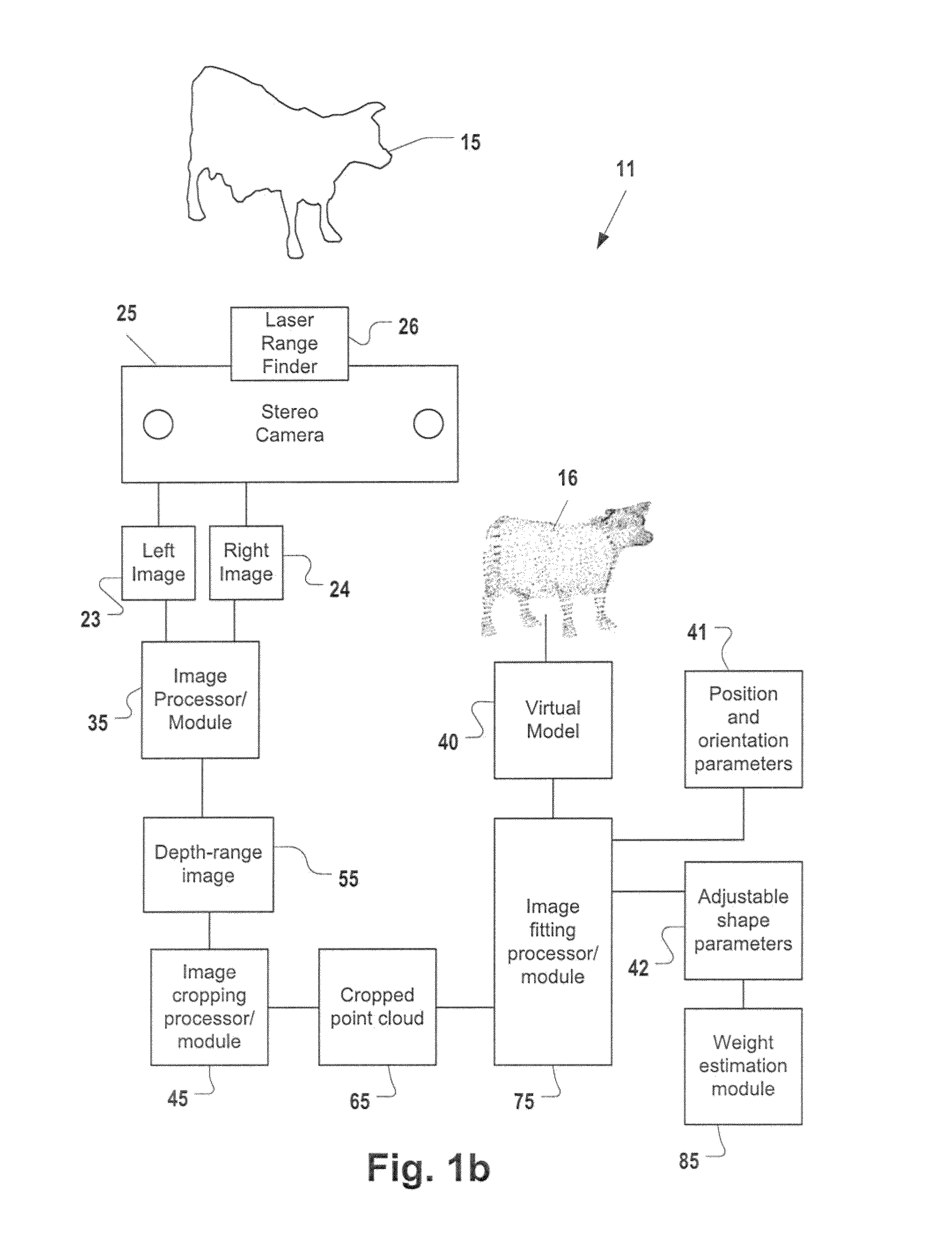Remote contactless stereoscopic mass estimation system
a stereoscopic mass estimation and remote contact technology, applied in the field of imaging systems, can solve the problems of not teaching or suggesting fitting a multi-dimensional virtual fish model having configurable shape parameters to the animal image, not teaching or suggesting fitting a multi-dimensional virtual animal model having configurable shape parameters,
- Summary
- Abstract
- Description
- Claims
- Application Information
AI Technical Summary
Benefits of technology
Problems solved by technology
Method used
Image
Examples
embodiment 200
[0085]Separating the cow (or other animal) from the environment is a non-trivial, tricky, and challenging aspect of the invention. Image processing speed issues further complicate the task. The image cropping embodiment 200 utilizes a series of processing steps designed to quickly and efficiently produce a cropped image that is suitable for fitting to a virtual animal model.
[0086]In step 210, the image cropping embodiment 200 reduces processing time by cropping the depth-range image 55 down to include only those points that are within threshold x, y, and z distances of the center point of the image 55. More particularly, the image cropping embodiment 200, when optimized for cattle applications, assumes that a cow in the image will never be longer than 3 meters, taller than 2.5 meters, or fatter than 2 meters. Accordingly, in step 210, all points more than 1.5 meters to the left or right of the center point of the point cloud image array are cropped out. All points more than 1 meter ...
second embodiment
[0145]FIG. 35 illustrates a side view of a portable, structurally integrated system 13 for remotely estimating the volume, mass and / or weight of an animal. System 13 comprises a triclops (i.e., three imagers) stereo camera 96 physically connected, via a pivotable bracket 97, to a computer case or holder 98 holding a general purpose tablet computer 99 with a touch screen interface that enables one to draw, sketch and write directly on the screen. An example of such a stereo camera 25 is Point Grey's™ Bumblebee® XB3 camera. The camera 96 is communicatively coupled to the computer 99, which is loaded with software capable of performing the image processing functions described herein.
[0146]FIGS. 36-38 illustrate top, front, and side views, respectively, of a third embodiment of a portable, structurally integrated system 14 for remotely estimating the volume, mass and / or weight of an animal. System 14 comprises a case 86 that encloses both a stereo camera 87 and a tablet computer having ...
PUM
 Login to View More
Login to View More Abstract
Description
Claims
Application Information
 Login to View More
Login to View More - R&D
- Intellectual Property
- Life Sciences
- Materials
- Tech Scout
- Unparalleled Data Quality
- Higher Quality Content
- 60% Fewer Hallucinations
Browse by: Latest US Patents, China's latest patents, Technical Efficacy Thesaurus, Application Domain, Technology Topic, Popular Technical Reports.
© 2025 PatSnap. All rights reserved.Legal|Privacy policy|Modern Slavery Act Transparency Statement|Sitemap|About US| Contact US: help@patsnap.com



